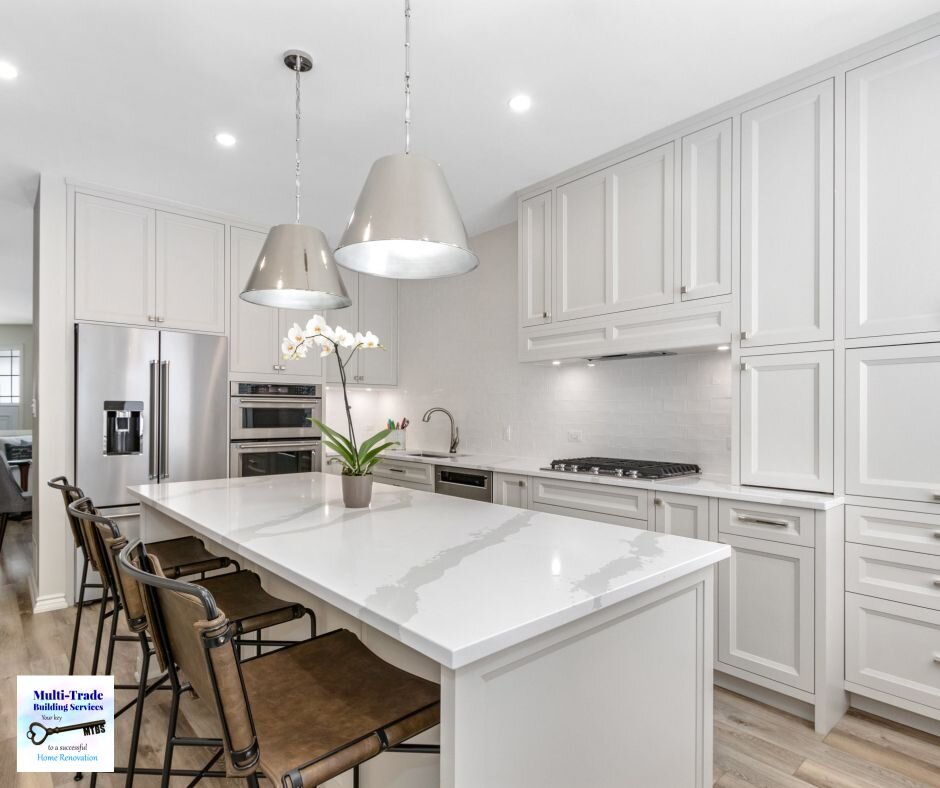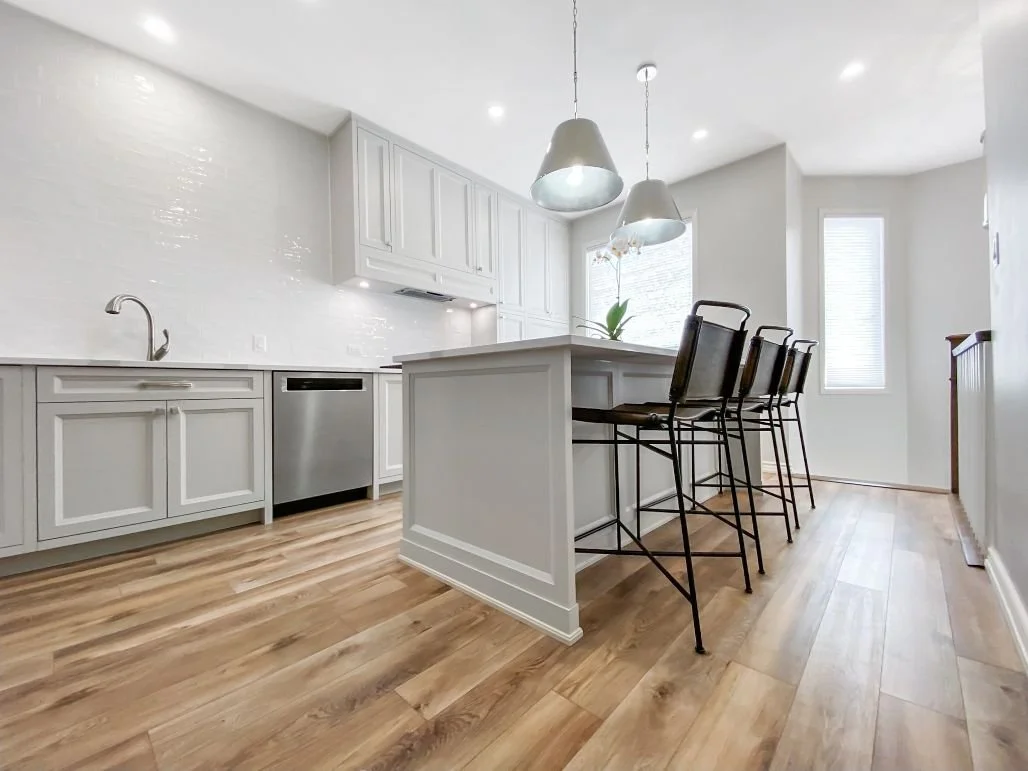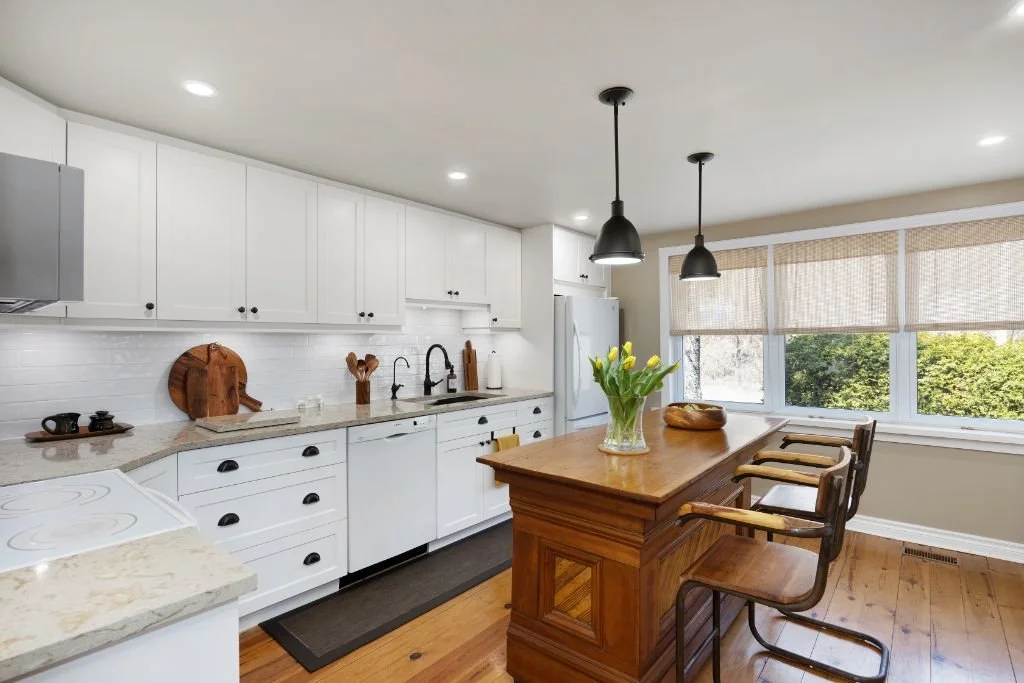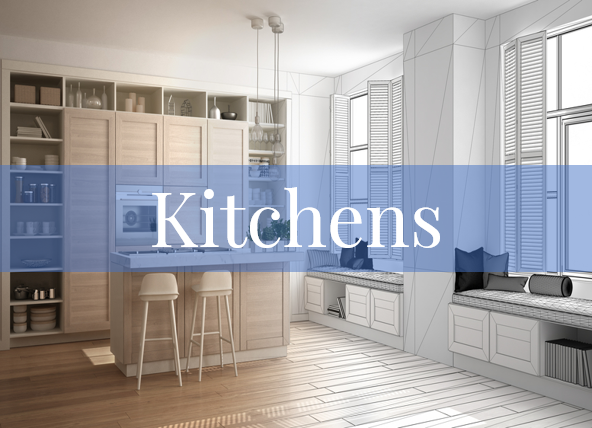6 Ways to Prepare Meals During a Kitchen Renovation
/One of the biggest challenges our kitchen renovation clients face is how they are going to deal with meals without a kitchen. It can be very expensive to eat out at restaurants all the time. It can also be quite a challenge to figure out what to feed the family, how to wash dishes, and even how to cook or where to prepare. In this blog post, we offer solutions to those problems to ensure you feed your family great meals.
Prefer to listen?
What do I do without my kitchen?
No matter how efficient your kitchen contractor is, there is no doubt that you will be without a countertop, sink, and stove for a period of time during your kitchen renovation. It could be as little as a week, but more likely it will be 2–3 weeks. During the COVID-19 crisis of 2020, some people were left without their kitchens for much longer as non-essential businesses were temporarily shut down and workers opted to stay home and self-isolate. If you have a plan and are prepared, living through a kitchen renovation, even one with delays, can be a breeze.
Option 1: Keep Your Appliances in Place Longer
There are several options available to help you get through a kitchen renovation. The first option is to keep the appliances in place for as long as possible. The easiest thing for a contractor to do is begin your project by demolishing and removing all of your existing kitchen cabinets. However, that leaves you without a kitchen right from the start.
Whether it’s a bathroom or kitchen, we recognize that you still need to live and function in your home as much as possible. Consequently, we won’t remove the toilet until absolutely necessary in a bathroom renovation. And, for a kitchen, we will leave the sink and stove in place as long as possible.
First, find another location near your kitchen where you can plug in your fridge. Your fridge should be plugged into a dedicated receptacle, but that may not be possible during the renovation. Do a complete panel labelling to determine if you have any receptacles in your home that are dedicated and would allow you to plug in your fridge there.
For example, one of our clients had a dedicated receptacle in her living room where she plugged in a portable air conditioner before she got central air. She doesn’t use the receptacle for anything now, so we were able to relocate her fridge close enough to the receptacle to plug it in.
If you don’t have any dedicated receptacles, you can still plug your fridge into a non-dedicated receptacle as long as it’s temporary. Once you’ve done your panel labelling, you will know what else is on that circuit, so you can ensure you don’t overload the circuit by using too many items at the same time.
Next is your stove. You can’t relocate your stove to another location, as you likely don’t have a stove receptacle anywhere else in your home (unless you have a stove in your basement, and then this is a non-issue anyway). The best way to deal with your stove is to leave it plugged in for as long as possible.
You will need to cover it and wash it daily, as the construction during your kitchen renovation will generate some dust. But if you protect your stove and leave it plugged in for as long as possible, you will still be able to use it throughout much of your renovation.
For your sink, just ensure your contractor removes all other kitchen cabinets but leaves your sink base in place until it is absolutely essential to remove it. Again, you’ll want to ensure you cover your sink while workers are on site and thoroughly wash it daily, but you can still have a functional sink for a little while longer if your contractor agrees to work around it. The disadvantage of this is that all of your other cabinets will be gone, so you won’t have a countertop to put your dishes on to dry.
Although doing all of the above can give you a semi-functional kitchen for a little while longer, please remember that having to work around your appliances can make construction a little more challenging for your contractor. If your stove and sink base are still in the kitchen and your contractor has to run new plumbing or electrical lines, those appliances might be in the way. Most contractors will be willing to accommodate your request, but there are other solutions to living without your main kitchen during your renovation.
Option 2: Set Up a Temporary Kitchen
Setting up a temporary kitchen is the best way to handle your kitchen renovation. For a temporary kitchen, you will need a microwave, a table to work on, access to a fridge, and I also recommend a countertop oven such as a toaster oven. I always recommend that our clients set up their temporary kitchen in the basement if they have the space for it there. It’s far enough away from the renovation that you won’t be terribly affected by the dust.
Set up a 6-foot table and cover it with a plastic tablecloth. I recommend going to a dollar store and picking up one of those vinyl, fuzzy-backed tablecloths that you would normally put on a picnic table. These are durable enough to survive your kitchen renovation and are easily wiped down to keep them clean. However, if you are using a countertop oven, you may want to remove the tablecloth from the portion that the oven sits on. Some ovens can heat up quite a bit and melt the plastic tablecloth. Try folding the tablecloth in half and putting the oven on the section without the tablecloth.
Set up your microwave. Your microwave should be plugged into a dedicated receptacle, but for this short period of time, you should be fine plugging it into a regular receptacle.
If you don’t have a table-top oven, such as a toaster oven, check out your local thrift stores. I recently went into a Bible for Missions store and found a large toaster oven for $10. It works perfectly, and it’s large enough that I cook all of my small casseroles in it instead of turning on my full oven.
Bring only as many dishes, bowls, and cutlery as you need. If you are a family of 4, bring four of everything and pack everything else away. Keep a plastic bin or basket near your table to store these in.
You will also need some basic cooking utensils, such as a large spoon, paring knife, large cutting knife, spatula, and ladle. When you are originally packing up your kitchen prior to the renovation, put all of these types of utensils into one labelled box and keep it in the basement with you. That way, if you find you need something you didn’t think of, it’s nearby and easy to get.
You can also set up your temporary kitchen in a spare bedroom or dining room if that’s more convenient for you. Wherever you decide to set up a temporary kitchen, just make sure there’s a sink nearby where you can wash up the dishes. Laundry tubs are great for this purpose! They are usually large and deep and allow for easy clean-up of pots or casserole dishes.
Option 3: BBQ, Crock Pot, and Instant Pot
One of the easiest things to do to plan for your kitchen renovation is to plan ahead with some already-prepared meals and a prepared menu. I recommend planning meals for four weeks. Although you likely won’t need this much time, it’s better to be prepared with more than is required.
No matter what time of year it is, you can always plan to cook some of your meals on the BBQ. Hotdogs, hamburgers, steak, chicken, or kebabs make quick and easy meals on the BBQ. You can even wrap some potatoes in aluminum foil and pop them on the grill. And have you ever had cut-up veggies drizzled with olive oil and your favourite spices, all wrapped up in foil, and done on the grill? They’re fabulous! Your barbecue can be your best friend during a kitchen renovation.
Your slow cooker and Instant Pot can also prove helpful during a kitchen renovation. Just prepare the food to go in, "dump" it in, and set it to cook. What could be easier during a kitchen reno? And if you’re using a crock pot, you can prep the meal at the beginning of the day, and it will be ready when you get home from work!
Option 4: Freezer Meals
I love freezer meals! Since I usually work 50–70 hours per week, these are my go-tos! I love preparing meals in advance and popping them in the freezer. Some of them I cook before putting them in the freezer, so all I have to do is heat them up to enjoy. As long as you prepare them in a microwave-safe dish, this works great during a kitchen renovation, as you can heat the casserole up in your microwave.
Another option for freezer meals is to prepare them right up until the cooking phase and then pop them in the freezer. I just dump them out of the freezer bag into a casserole dish and pop them in the countertop oven. It’s a home-cooked meal in no time. Planning and preparing these in advance will make sailing through your kitchen renovation a breeze.
Option 5: Protein Salads
Another tip to save you during a kitchen renovation is to grill or cook some chicken, beef, and salmon prior to the start of your kitchen renovation. Cut them up into strips and store them in freezer bags. You can also purchase these already cooked and cut up in most grocery stores (and even Costco). When you need a quick meal during your kitchen renovation (or anytime for that matter), throw together a salad and toss some of the chicken, steak, or salmon on top. There are so many choices of pre-made salads or containers of spring mix available in grocery stores that this makes a quick and nutritious meal option.
Option 6: Do the Cooking for Your Friends or Family
Here’s another great idea on how to get through meals during a kitchen renovation. One of our kitchen clients was referred to us by her best friend. We had done her friend’s kitchen two years earlier. When we had our pre-construction meeting just before starting, our client expressed concern that she didn’t have time to prepare meals in advance and didn’t know how she would manage meals during the renovation.
I suggested she call her friend and offer to cook dinner for her friend’s family three nights a week during her renovation. She and her family would come over and use her best friend’s kitchen to cook meals for both families. This idea worked great! Not only did it give her best friend a break from cooking three times during the week, but both families had an opportunity to socialize together. It was a welcome break for both families!
Be creative! Don’t have friends that you think would be open to this idea? How about calling your daughter or son and making the same offer? Call your Mom and Dad and offer to cook them meals in the comfort of their own home during your kitchen renovation. You might even end up having some fun in the kitchen!
Feeding the family during a kitchen renovation doesn’t have to be expensive, time-consuming, or difficult. It does require some planning and preparation in advance. However, with the right tools and setup, it will be a breeze. The key to getting through this is to think outside the box. Turn it into an adventure, and you’ll be finding new ways to ensure you feed your family well during your kitchen renovation.
Click the infographic to the right to download your copy of this blog post summary. No opt-in is required.




























